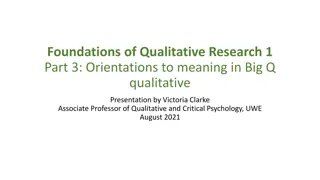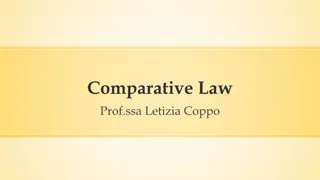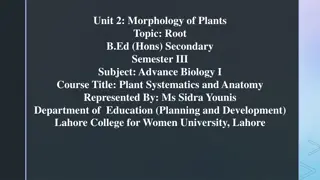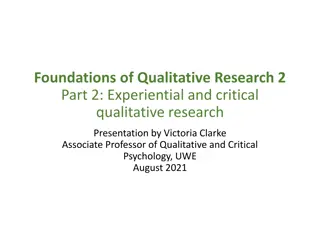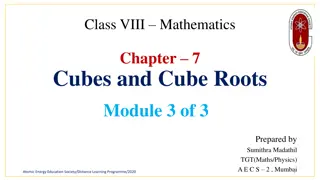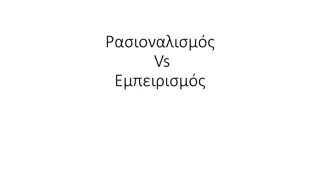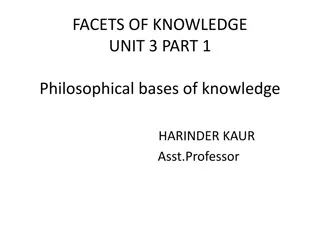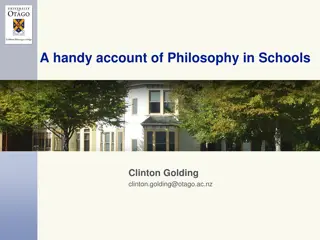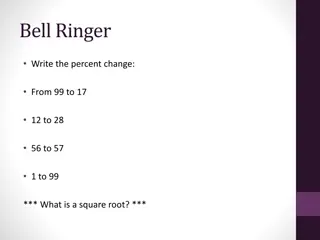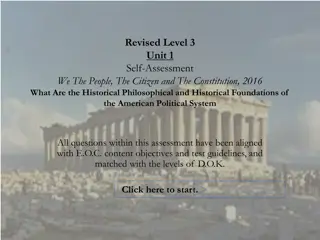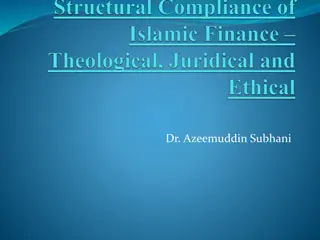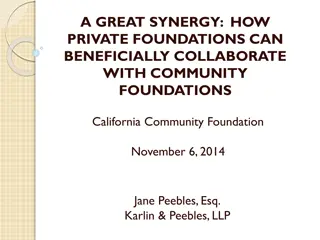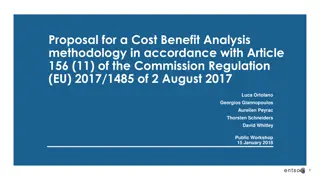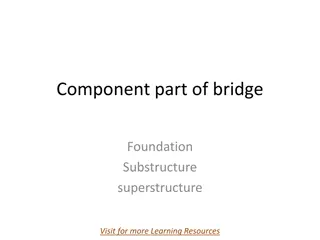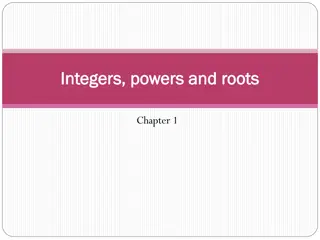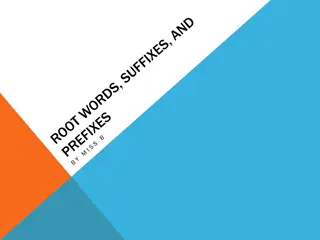Roots of Historical Research: Philosophical Foundations & Methodology
Historical research traces back millennia, with modern methodologies evolving since the 19th century. This field embraces diverse philosophical views, examines past events' impact on the present, and faces challenges like engaging with historical data sources.
Download Presentation

Please find below an Image/Link to download the presentation.
The content on the website is provided AS IS for your information and personal use only. It may not be sold, licensed, or shared on other websites without obtaining consent from the author.If you encounter any issues during the download, it is possible that the publisher has removed the file from their server.
You are allowed to download the files provided on this website for personal or commercial use, subject to the condition that they are used lawfully. All files are the property of their respective owners.
The content on the website is provided AS IS for your information and personal use only. It may not be sold, licensed, or shared on other websites without obtaining consent from the author.
E N D
Presentation Transcript
Chapter 8 Historical research L Estrange S. (2014). In: Mills J and Birks M (eds) Qualitative methodologies: A practical guide. London: Sage Publications
Learning objectives Trace the roots of historical research Explore the diverse philosophical foundations that underpin historical research Reconcile the unique position of the historical researcher in relation to their inquiry Describe the implications for philosophical and methodological alignment when working with historical data sources Outline processes of data collection and analysis and dissemination of outcomes in historical research
History of the methodology History as a form of chronicle has existed for millennia Modern historical research began in the mid 19thcentury Leopold von Ranke (1795-1886) leading figure who established historical enquiry as a distinct discipline
History of the methodology 1960s emergence of fields such as economic history, social history, military history, political history, diplomatic history 1960s & 1970s emergence of hybrid fields such as historical demography, historical geography, historical sociology
Philosophical underpinnings No common underlying philosophy Divide between those that favor the modus operandi of natural sciences and those that take a humanities or social sciences approach Committed to the role of the past in shaping the present and to historical enquiry illuminating and explaining features of the contemporary world
Position of the researcher Researchers generally not in a position to directly engage with their subject matter Exceptions are: life-course studies, oral history, biographical research (Miller, 2000; Miller, 2005) Existence of relevant data is sometimes in doubt
Position of the researcher Learning how to use quite foreign materials as evidence Scope of misinterpretation is rife i.e. ornate daggers as armament or jewelry? Set aside and critically assess taken-for- granted assumptions and presumptions of the researcher s own culture
Position of the researcher Be wary of anachronism : projecting present assumptions into the past Benefits and challenges of hindsight in knowing the outcome
Aligning philosophy and methodology with purpose Philosophy and methodology subordinated to what the research question asks Developing a focused research question shapes the inquiry and orients the researcher towards particular types of source material Refining the research question leads to more precise formulation of questions the researcher will put to source material
Aligning philosophy and methodology with purpose Important to have a well-defined research interest, clarity of purpose and a precise set of research questions Philosophy and methodology required for coherence can cogency of a research study but they do not specify preconditions for the form of enquiry to be undertaken
Data generation and collection Incapacity of historical research to produce customized data Reliance on a given society or culture to produce potential data sources and to collect and maintain them through institutions i.e. libraries, museums, archives Researcher gathers raw materials from institutions Raw materials will come to constitute the study s data
Data generation and collection Scope of data reduced by: Limited life span of materials used for records and documents i.e. paper, ink, stone Select minority of documents and artifacts deemed important enough to be preserved Lack of organizing and archiving of artifacts Restrictive access
Data generation and collection Digitization of records and access to digitized archives via the internet Digitization had transformed a research task that previously could take days Reach and repertoire of historical researchers enhanced courtesy of the internet
Analysis of data Use the same techniques as any form of documentary research: content analysis, discourse analysis, narrative analysis , life- story analysis, biography, hermeneutic (Scott, 1990; Plummer, 2001; McCulloch, 2004; Prior, 2003; Prior, 2011) Difference is the consideration of the historicity of documents/artifacts and the position of the researcher
Analysis of data Sensitivity to temporal context of historical documents and artifacts Need to be aware of the function of documents/artifacts used in the time in which they were composed and familiarize yourself with the custom and practice deployed in their construction
Analysis of data No extant techniques can claim primacy within historical research Statistical analysis especially prominent in economic history and historical demography Content analysis and discourse analysis are common in studies of politics and the media Narrative analysis common technique in studies of processes of historic change
Analysis of data Textualist techniques such as hermeneutics and deconstruction favored in study of thought and ideas Decide what formal analytic technique best suits your data sources, topic and research question
Quality and rigor Historical enquiry not reducible to a set of formal rules and procedures that can function as a formula to follow in conducting research Historical research is a craft halfway between science and art (Bloch, 1994) No checklist to assess that necessary steps and procedures were correctly followed
Quality and rigor Critical discussion to ascertain authenticity, reliability, representativeness, appropriateness and comprehensiveness of the body of sources of data Detailed description of precise procedures rarely provided Footnoting of sources is prevalent to demonstrate relationship between the final text and its roots in data sources
Quality and rigor Explanation of research procedures integrated into overall argument and final presentation Strict replicability difficult, if not impossible Quality and rigor often found in the syntheses and capacity of the research product to intelligibly reconstruct events, processes, actions and trends
Quality and rigor Outcome often lies in the quality of the narrative its plausibility, coherence, insightfulness, respect for context and evidence and capacity to make better sense of some phenomenon [ ] than previous accounts have managed (L Estrange, 2014)
Presentation and dissemination of findings Historical research in the social sciences attracts many different audiences Core consistency of any piece of historical research is those most interested in the specific topic being investigated Mode of presentation depends on the particular type of historical research undertaken
Presentation and dissemination of findings Dissemination of findings is widely varied Poster presentations or short conference presentations tend to favor quantitative studies Qualitative historical research more at home in monograph book form
Summary Historical research methods covers heterogeneous ways in which researchers study the past Particular challenges relating to the position of the historical researcher Challenges and advantages of accessing data Use of a range of data analysis techniques The craft of historical research Variety of presentation and dissemination methods
References Bloch M. (1954) The Historian's Craft, Manchester: Manchester University Press. McCulloch G. (2004) Documentary Research in Education, History and the Social Sciences, London: Routledge Falmer. Miller R. (2000) Researching Life Stories and Family Histories, London: Sage. Miller R. (2005) Biographical Research Methods. London: Sage. Plummer K. (2001) Documents of Life 2: An Invitation to Critical Humanism, London: Sage. Prior L. (2003) Using Documents in Social Research, London: Sage. Prior L. (2011) Using Documents and Records in Social Research. London: Sage. Scott J. (1990) A Matter of Record: Documentary Sources in Social Research, Cambridge: Polity.




